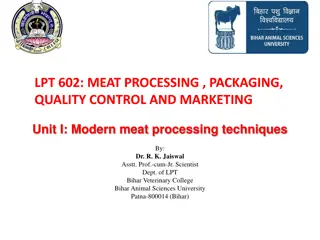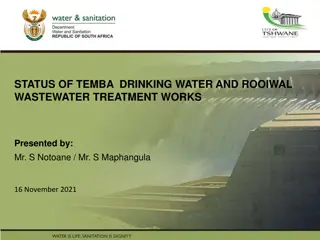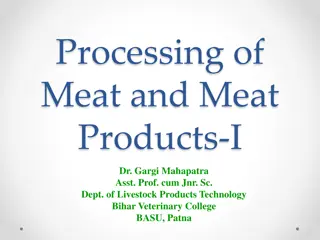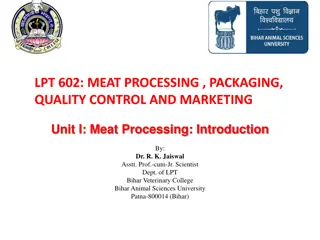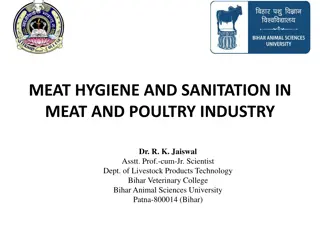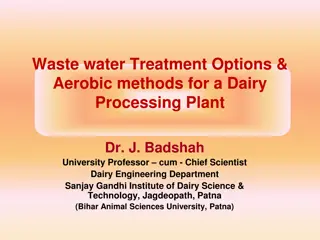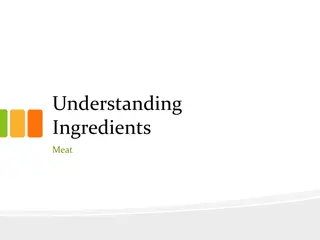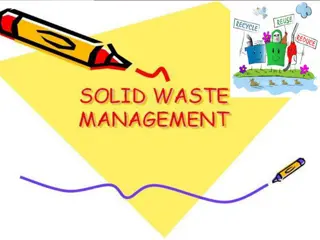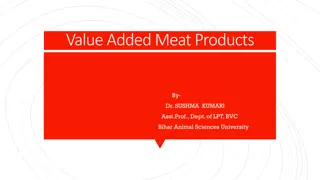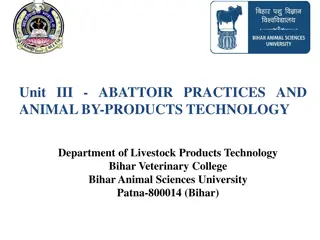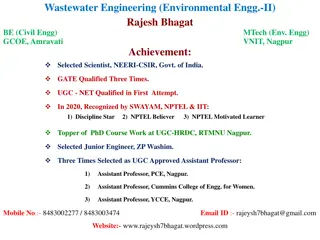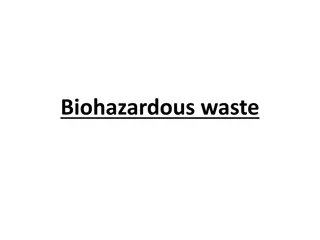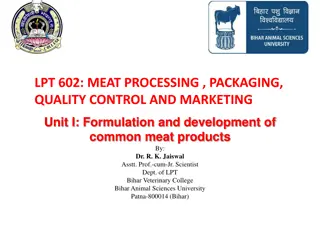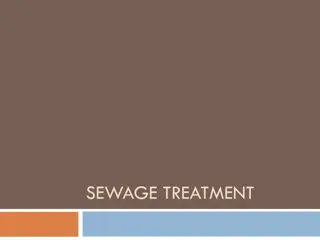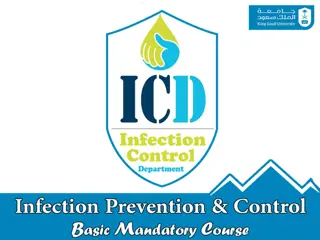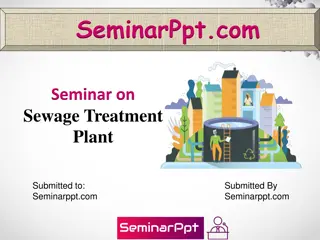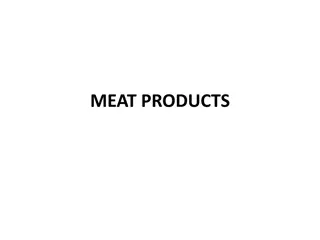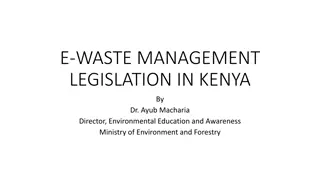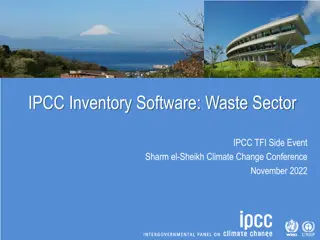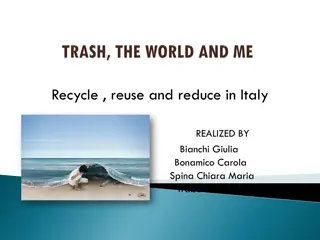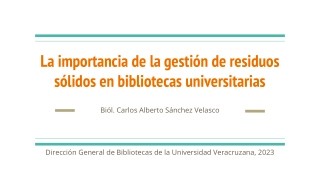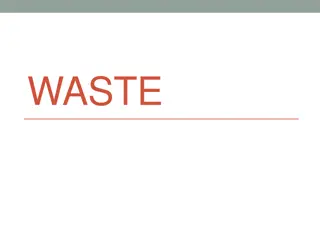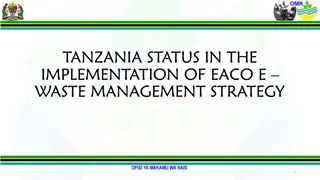Abattoir Effluent Treatment: Understanding and Managing Waste Water in Meat Processing Plants
Effluents in abattoirs contain a variety of pollutants, including fats, oils, greases, chemicals, and organic matter. Direct discharge of untreated effluents can harm water bodies by depleting oxygen levels and disturbing pH balance. Terminologies like BOD and COD help measure the quality of wastewater, with effluents from different meat plants having varying levels of pollution. Effective treatment of effluents is crucial to prevent environmental pollution and protect aquatic life.
Download Presentation

Please find below an Image/Link to download the presentation.
The content on the website is provided AS IS for your information and personal use only. It may not be sold, licensed, or shared on other websites without obtaining consent from the author. Download presentation by click this link. If you encounter any issues during the download, it is possible that the publisher has removed the file from their server.
E N D
Presentation Transcript
Abattoir Effluent Treatment (A part of Unit III- 3rdProf. Year) By By Dr. Gargi Mahapatra Dr. Gargi Mahapatra Assistant Professor cum Junior Scientist Assistant Professor cum Junior Scientist Bihar Veterinary College Bihar Veterinary College B.A.S.U., Patna. B.A.S.U., Patna.
What are effluents? What are effluents? Effluents are liquid wastes (treated/ not treated) which are passed through a plant s sewer pipe, to be discharged into water bodies
Composition effluents Composition effluents General Fats/ Oils/ Greases (FOGs),Chemicals, Detergents, Heavy Metal Rinses, Living Tissues, Solids, Food Wastes, Microbes, Toxins, Organic Matter etc . Abattoirs & Meat Plants Elevated level of concentrated nutrients including FOGs, organic matter, micro-organisms, suspended solids, and detergents All components of effluents have a potential to pollute natural waters.
Why The effluents Why The effluents Effluent generated although non toxic but has large amount of organic matters & suspended solids. Direct discharge of these effluents into the water bodies causes depletion of Dissolved Oxygen (D.O.) as well as disturbs the pH of the environment in which the aquatic organisms thrive. need to be need to be treated? treated?
Points of effluent Points of effluent production in an abattoir production in an abattoir Lairage Bleeding Dressing Paunch Handling Processing By-Product Handling Cleaning
Terminologies Defining Quality of Waste water Chemical Oxygen Demand The amount of dissolved oxygen required for the chemical oxidation of total organic matter in water. A chemical oxidation process Bio-chemical Oxygen Demand The amount of dissolved oxygen which is consumed by bacteria while decomposing organic matter under aerobic conditions. A biological oxidation process BOD COD >
BOD of effluents produced in BOD of effluents produced in abattoirs and meat plants. abattoirs and meat plants. Poultry Meat Plant- 1000-1200 ppm Pig Meat Plant- 1500-2000 ppm Cattle & Sheep- 1400-3200 ppm Meat Plant Fish - 1000-3000 ppm Processing Dairy - 600-1300 ppm Plant
Steps of Effluent Steps of Effluent Treatment Treatment Stage I (Screening of solids and Removal of fats) Stage II I (Biodegradation of Organic Matter) Stage III I (Sedimentation and Disinfection)
Stage I of Effluent Treatment Primary Filtration (Effluent passed through strong steel mesh) Secondary Filtration (Re-filteration by vibrating screen with a fine mesh arranged at an angle) Fat Separation (Water agitated and air pumped, Fat rises upwards which is skimmed) Equalization (Activated sludge, a biological stimulant added in small quantity) **End of this step 65%nof solids & 90% of fat is removed reducing the BOD by 35% .
Stage II of Effluent Treatment Biological Oxidation Aerobic Process Anaerobic Process Occurs in open areas. Pond of 1 m depth filled with waste water and is agitated in presence of ample air supply Occurs in closed areas. Deep tank having 4-5 m depth is filled with waste water and is agitated. Results in 60% reduction in BOD of treated water. * For meat plants a combination of both used
Stage III of Effluent Treatment Sedimentation and Disinfection Sedimentation:- The un-oxidized organic matter and other suspended material is removed through gravitational force and supernatant fluid is directed towards the disinfection tank or the sewer line. Disinfection:- The supernatant is then disinfected with chlorine treatment UV treatment etc. and then discharged to water bodies through sewer lines.
ABATTOIR EFFLUENT TREATMENT PLANT Sludge Semi-solid Fertilizer/ Composting Dried Sludge Landfill/ Fuel
Thank You Thank You


